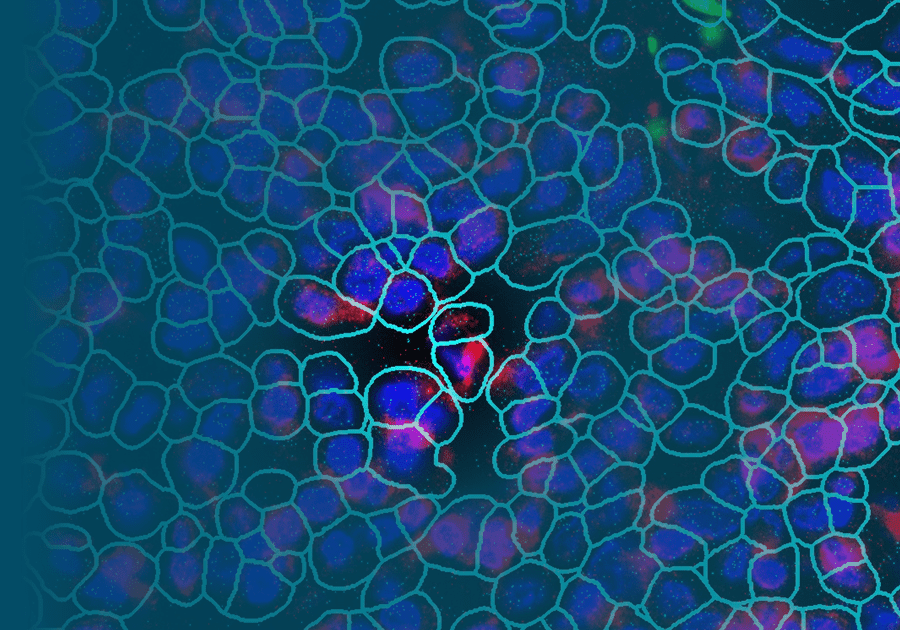
Common questions in molecular biology: What can biomarkers tell us?
As we go about our day, we are surrounded by indicators. Our clocks tell us the time. Ovens will reveal their current temperatures and alert us when they’ve reached their set temperature. Our cars indicate how much gas they have, when they need an oil change, and if a tire needs air. All convey quantitative and meaningful information.
Biomarkers are no different. However, in the case of biomarkers, they instead reveal to us something about our health or bodily functioning. Biomarkers can refer to general observations about the body, or reveal subcellular signals that tell us about our health.
In this Common questions in molecular biology blog post, I explore what biomarkers are and what they can tell us.
How do I recognize a biomarker?
There are a variety of types of biomarkers and methods for measuring them. What biomarkers have in common is that each is an objective, quantifiable, and reproducible measure that serves as a health indicator. Many biomarker assessments will sound familiar. For example, during a routine doctor’s appointment, several biomarkers are assessed. These include your weight, blood pressure, oxygen saturation and pulse.
Depending on any health conditions you have, you may also need to give a urine sample or have blood drawn. Presence of white blood cells in urine can indicate a urinary tract infection. Blood draws provide a wide variety of information, such as the number of different kinds of blood cells, hormone levels, or the amount of glucose in your blood.
Since biomarkers are objective and quantifiable measures associated with particular health outcomes, these are measured and tracked between appointments. For example, measuring one’s blood pressure is a reliable indicator of overall health. Although a high reading could be obtained because of stress, consistently high readings could be indicators of developing heart disease, increased risk of stroke or kidney diseases. Biomarkers are also used by scientists performing clinical research to test, for example, if treatment with a new drug leads to the desired outcome (e.g., does it lower cholesterol levels?).
Many of the most interesting and exciting biomarkers are molecular biomarkers, which are useful for assessing disease risk, determining a prognosis, and guiding treatment.
Keep in mind that many of the most interesting and exciting biomarkers are molecular biomarkers. These include the presence or absence of certain proteins in our cells, gene expression profiles, or other cellular characteristics. These biomarkers are useful for assessing risk of disease, determining a prognosis, and to guide personalized treatment decisions.
What can different kinds of biomarkers reveal?
A common way of organizing biomarkers is by their usage. There are six general classes: diagnostic, monitoring, predictive, prognostic, susceptibility/risk and safety biomarkers.
Diagnostic biomarkers are used to determine a person’s disease. You could also refer to these as biomarkers that help make a diagnosis. For example, a person’s average blood sugar or hemoglobin A1C (HbA1C) is used to diagnose someone with Type II diabetes. Current research using single-cell sequencing and technologies like NanoString’s CosMx™ Spatial Molecular Imager are creating cancer cell atlases that describe common multinomic patterns with cells in their spatial context. This will facilitate the shift in cancer treatment from focusing on organ based diagnosis to molecular diagnoses of cancer.
Monitoring and response biomarkers are used to track a condition, disease state, or response to an intervention. These include many of the common tests done in your doctor’s office.
To facilitate treatment decisions, predictive and prognostic biomarkers are used. Predictive biomarkers are used to ascertain how a patient will respond to a treatment. For example, certain genotypes for the Serotonin Transporter (SERT) gene and the catechol-O-methyltransferase (COMT) genes are associated with different outcomes to treatments with common psychiatric medicines, such as anti-anxiety or antidepressant medications. Therefore, a prescriber can examine a patient’s genotypes to guide treatment decisions.
The main types of biomarkers are diagnostic, monitoring, predictive, prognostic, susceptibility/risk and safety.
A prognostic biomarker is used to determine the severity of disease in a person who is already diagnosed. Said otherwise, a prognostic biomarker is used for making a prognosis. For example, the levels of Prostate Specific Antigen (PSA) in the blood at the time someone is diagnosed with prostate cancer corresponds to the average one- and five-year survival rates. Given this information, one may choose to treat a cancer more or less aggressively, or pursue palliative care instead.
Susceptibility or risk biomarkers are used to determine the likelihood that someone will develop a particular disease over the course of their lifetimes. For example, if someone has the particular gene mutations, such as the BReast CAncer (BRCA) genes, they are more likely to get breast cancer over the course of their lives.
Finally, there are safety biomarkers. These are signs that are important indicators if a treatment or other environmental exposure is causing serious harm to the patient. For example, elevated blood levels of creatinine can indicate potential kidney damage.
The many types of biomarkers can tell us important information about treatment response, monitoring and design
A biomarker is any kind of objective and reliably quantifiable measure that indicates something about a person’s health status. A common way to organize biomarkers is by one of their six uses, such as for making a diagnosis or prognosis, deciding on treatment options, monitoring treatments, determining susceptibility to developing a disease, and predicting the likelihood of developing a disease later in life.
Recent developments in molecular biology are adding to the repertoire of known biomarkers. For example, using new technologies like NanoString’s CosMx™ SMI to perform single-cell sequencing facilitates biomarker discovery that accounts for their spatial location in the body. As new research is released, it will be exciting how identification of novel biomarkers improves the practice of medicine.
The CosMx™ SMI and decoder probes are not offered and/or delivered to the Federal Republic of Germany for use in the Federal Republic of Germany for the detection of cellular RNA, messenger RNA, microRNA, ribosomal RNA and any combinations thereof in a method used in fluorescence in situ hybridization for detecting a plurality of analytes in a sample without the consent of the President and Fellows of Harvard College (Harvard Corporation) as owner of the German part of EP 2 794 928 B1. The use for the detection of cellular RNA, messenger RNA, microRNA, ribosomal RNA and any combinations thereof is prohibited without the consent of the President and Fellows of Harvard College (Harvard Corporation).




